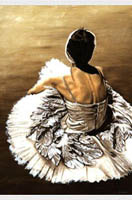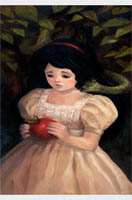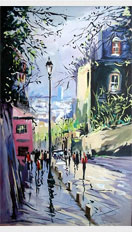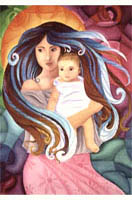Agnolo di Cosimo
Agnolo di Cosimo (November 17, 1503, Firenze – November 23, 1572, Firenze) (also known as Agnolo Bronzino and Agnolo Tori). Florentine Mannerist painter, pupil and adopted son of Pontormo, who introduced his portrait as a child into his painting Joseph in Egypt (National Gallery, London).
The origin of his nickname, Bronzino is unknown, but could derive from his dark complexion. Bronzino's style to was indebted to his master, Pontormo, however he lacked the emotional intensity that was such a characteristic of Pontormo's work and excelled as a portraitist rather than a religious painter. He first came to the Medici court in 1539 to carry out the decorations for the wedding of Cosimo de' Medici with the beautiful and rich Eleonora of Toledo, the daughter of the Viceroy of Naples. It was not long before he became the official portrait painter of the Duke and his court. He was court painter to the Duke for most of his career, and his work influenced the course of European court portraiture for a century. His portraits convey a sense of almost unemotional insolence and assurance.
Bronzino was also a poet, and his most personal portraits are perhaps those of other literary figures (Laura Battiferri, Palazzo Vecchio, Florence, c.1560). Two years spent in Rome (1546–1548) induced him to carry out a series of ecclesiastic paintings (the Resurrection of the Virgin Mary, 1552) which appear to be suffering from the effects of a moral crisis: this was, after all, the period in which the atmosphere of austerity and Counter Reformation held full sway.
Venus, Cupid, Folly, and TimeHe was less successful as a religious
painter, his lack of real feeling leading to empty, elegant posturing,
as in The Martyrdom of San Lorenzo (1569), in which almost every
one of the extraordinarily contorted poses can be traced back to
Raphael or to Michelangelo, whom Bronzino idolized. It is the type
of work that got Mannerism a bad name. Bronzino's skill with the
nude was better deployed in the celebrated Venus, Cupid, Folly and
Time, which conveys strong feelings of eroticism under the pretext
of a moralizing allegory. His other major works include the design
of a series of tapestries on The Story of Joseph for the Palazzo
Vecchio.







